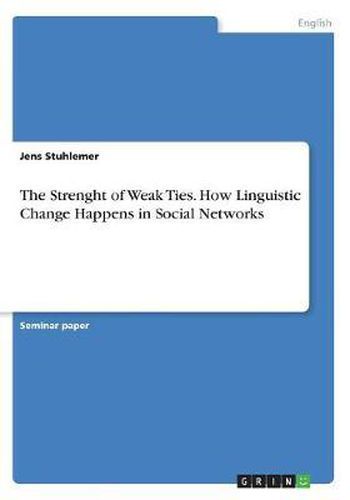Readings Newsletter
Become a Readings Member to make your shopping experience even easier.
Sign in or sign up for free!
You’re not far away from qualifying for FREE standard shipping within Australia
You’ve qualified for FREE standard shipping within Australia
The cart is loading…






Seminar paper from the year 2011 in the subject English Language and Literature Studies - Linguistics, grade: 2.3, University of Cologne, language: English, abstract: The following pages will take a deeper look on the Social Network Theory as part of the sociolinguistics. It will further be discussed, to what extend social networks are bound to concepts of social class. Since the Social Network Theory was primarily build to function as tool within the sociolinguistics, a short summary of two studies will be discussed. Furthermore, oppositions and similarities of Milroys and Labovs theories according to main factors of linguistic change shall be shown. A historical perspective of weak ties will be given at the example of late medieval and early modern London, before the last chapter will not only try to summarize the most important results, but also hint at the importance of an integrated model of the network theory and social factors.
$9.00 standard shipping within Australia
FREE standard shipping within Australia for orders over $100.00
Express & International shipping calculated at checkout
Seminar paper from the year 2011 in the subject English Language and Literature Studies - Linguistics, grade: 2.3, University of Cologne, language: English, abstract: The following pages will take a deeper look on the Social Network Theory as part of the sociolinguistics. It will further be discussed, to what extend social networks are bound to concepts of social class. Since the Social Network Theory was primarily build to function as tool within the sociolinguistics, a short summary of two studies will be discussed. Furthermore, oppositions and similarities of Milroys and Labovs theories according to main factors of linguistic change shall be shown. A historical perspective of weak ties will be given at the example of late medieval and early modern London, before the last chapter will not only try to summarize the most important results, but also hint at the importance of an integrated model of the network theory and social factors.